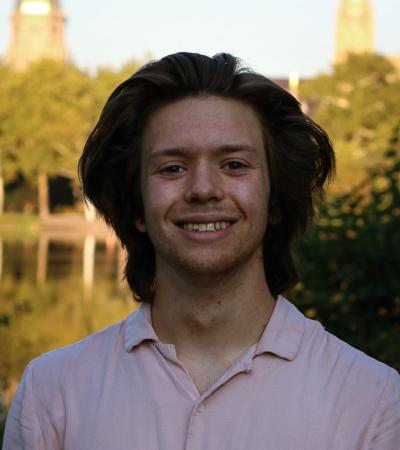NDSEED - Kea Kea Bridge, Bolivia
Experiencing the World Fellowship
Adviser: Tracy Kijewski-Correa
Final Report:
Location: Bolivia
My experience in Bolivia was both novel and humbling. The construction work that was done was personally informative and widely important as the team I was with needed to ensure that the construction process and the bridge itself was safe. However, what I found was that while I did learn a great amount through the work I was assigned as an engineer for the project, I learned the most about Bolivia when I was able to sit still and observe the things I could not do.
To be honest, I spent a great deal of time being frustrated with everything that was out of my control. This was especially true with the municipality of Potosí, with whom we were coordinating for critical material deliveries to the incredibly remote community of Kea Kea. The municipal engineers consistently delivered materials late throughout the course of the project, delaying construction and making the team reschedule and work around problems that were unavoidable. The maddening process of waiting for materials over time made me doubt the validity of our work at times as I couldn't fathom that a project that mattered this much to the community could be treated as an afterthought. After some reflection and many personal experiences with the community, however, I realized that the level of municipal support that we received is a constant for the people of Kea Kea. If a project this important had to deal with inconsistent delivery and quality for materials, then how is municipal support for Kea Kea in normal circumstances? Where does the development of Kea Kea fall as a priority for Potosí without the help of outside organizations? This realization allowed me to recognize that the isolation of communities like Kea Kea is more systemic than I originally thought.
This reflection greatly contextualized the final celebration (or the entrega) of the bridge project for me. After the bridge was blessed by the community, the community gave insurmountable effort to demonstrate their gratitude. Everyone danced and celebrated for hours into the next morning over the development, showering us with gifts, food, and praise. After seeing the community interact and use the bridge, the intensity of the celebration made sense. This bridge is more than a way to cross the river during the wet season. The bridge is a hangout spot. The bridge is a place for community meetings. The bridge is a symbol of hope and inspiration for future projects. It’s a reminder that, despite their relationship with their municipality, they are not forgotten. This was clear to me the moment I witnessed the children of the community run across the bridge for the first time. With the complicated lives the kids of Kea Kea live, they found a moment of victory as they crossed the bridge safely.
The team’s work had us finding ourselves building bridges between us and the community as well. Days spent doing laundry, having profound conversations, and competing in soccer tournaments proved to me the importance of being grounded in the present moment when doing field work. The value of listening to the perspectives of those who live in the place you’re helping is invaluable, and it’s thanks to the workshops hosted by Kellogg that I knew how to properly navigate the time spent with the community. Asking the right questions and creating strong friendships isn’t something you can do from an American college campus. It is these relationships which helped me develop the understanding of how rural communities like Kea Kea operate and what steps moving forward can help connect them with the rest of the world.
The Experiencing the World Fellowship allowed me to better understand the importance of working with, and not for, other people. The empowerment one gets when you listen to them and experience life with them is irreplaceable and necessary for meaningful development in rural communities.






